Full of Flavor and Character: Craft Beer, Made in Fukuoka
2020.02.28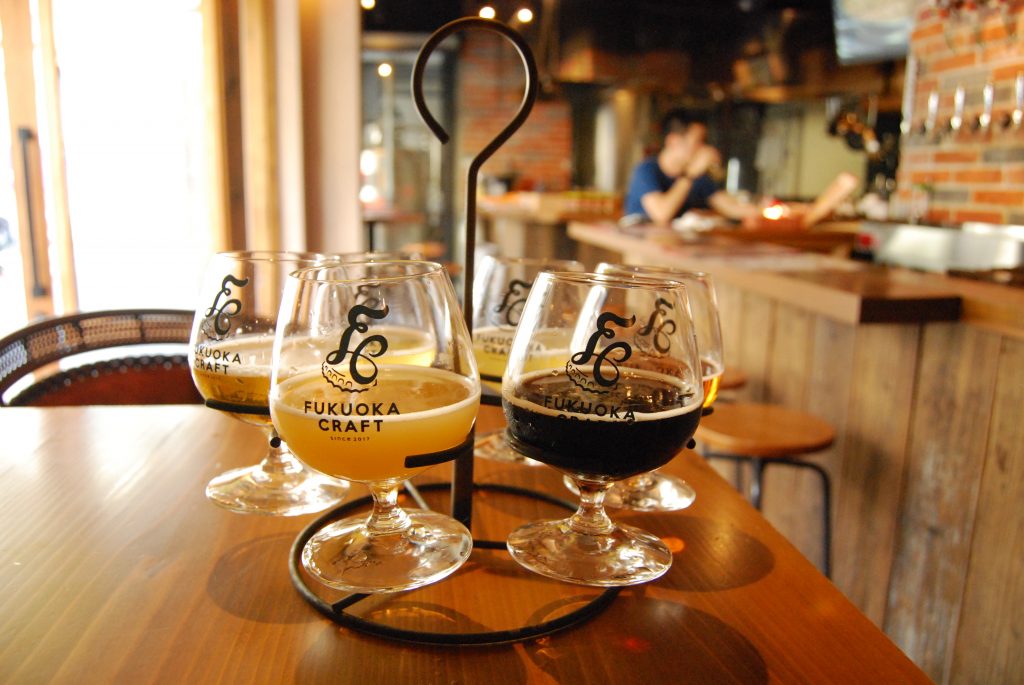
Craft beer has grown more popular over the years both in Japan and around the world. Beer is often viewed as an essential summer beverage, but craft beer, with distinct characteristics like hop bitterness or fruity aromas, has become a year-round drink as wine is that pairs well with food.
○A local brewery at a Mexican bar in Fukuoka’s Daimyo neighborhood
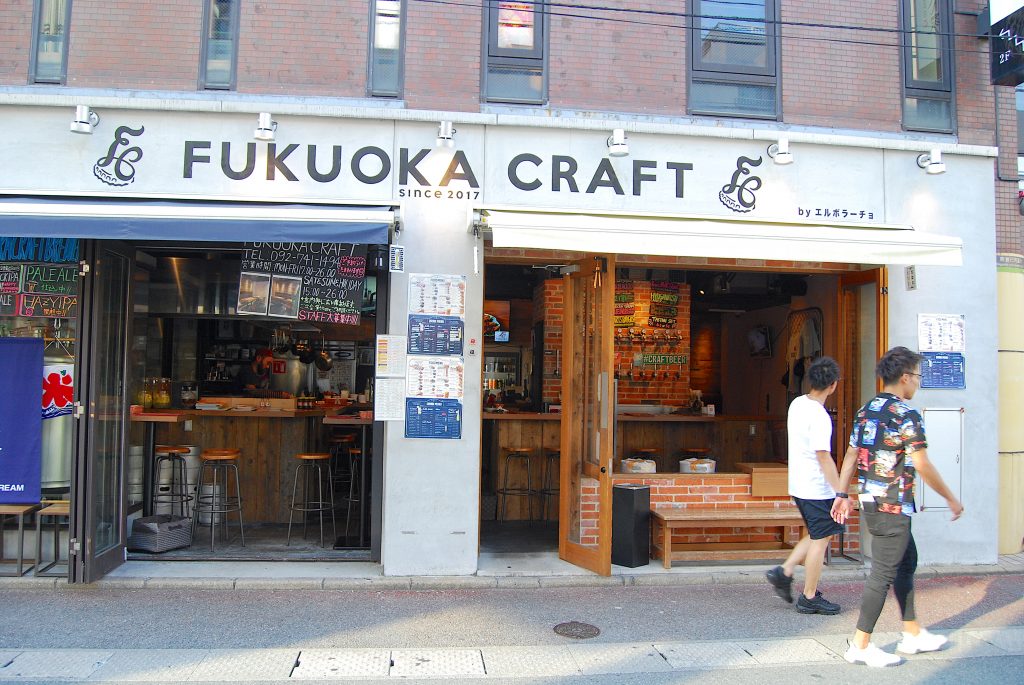
The Daimyo neighborhood is within walking distance of Fukuoka’s downtown Tenjin district There, among the trendy boutiques of Konya street, an area popular with young shoppers and tourists, is a bright, airy bar. The shop’s name in bold letters reads “FUKUOKA CRAFT by El Borracho”. A bar counter lies in the middle of the space, surrounded by tables. Behind the counter are a row of taps for serving craft beer. Next door and visible through a glass partition, a small space is filled with eye-catching brewing tanks.
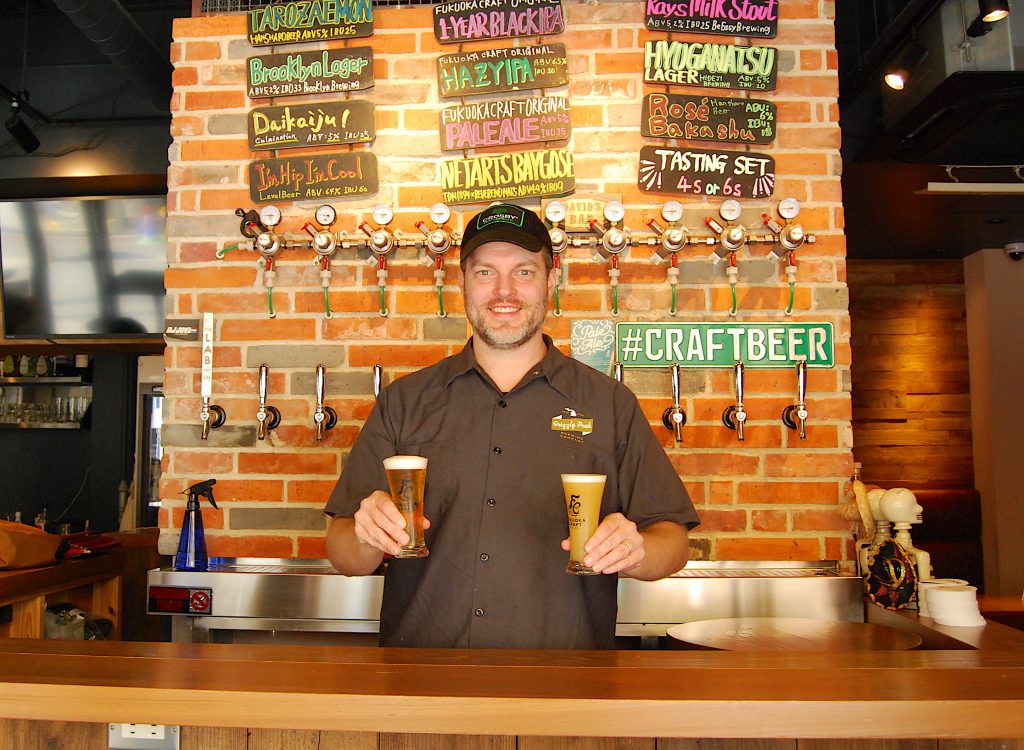
Brewer David Victor
The brewer behind the shop’s Fukuoka-made beer is David Victor. Originally from Michigan in the US, David had been studying brewing for a number of years in other Japanese breweries and in Portland, Oregon.
“I studied at some breweries around the Tokyo area, as well as in Fukuoka. After several visits to Yame Brewery nearby as well as an intensive course at Outsider Brewing in Yamanashi, I began brewing here at Fukuoka Craft in June 2018.”
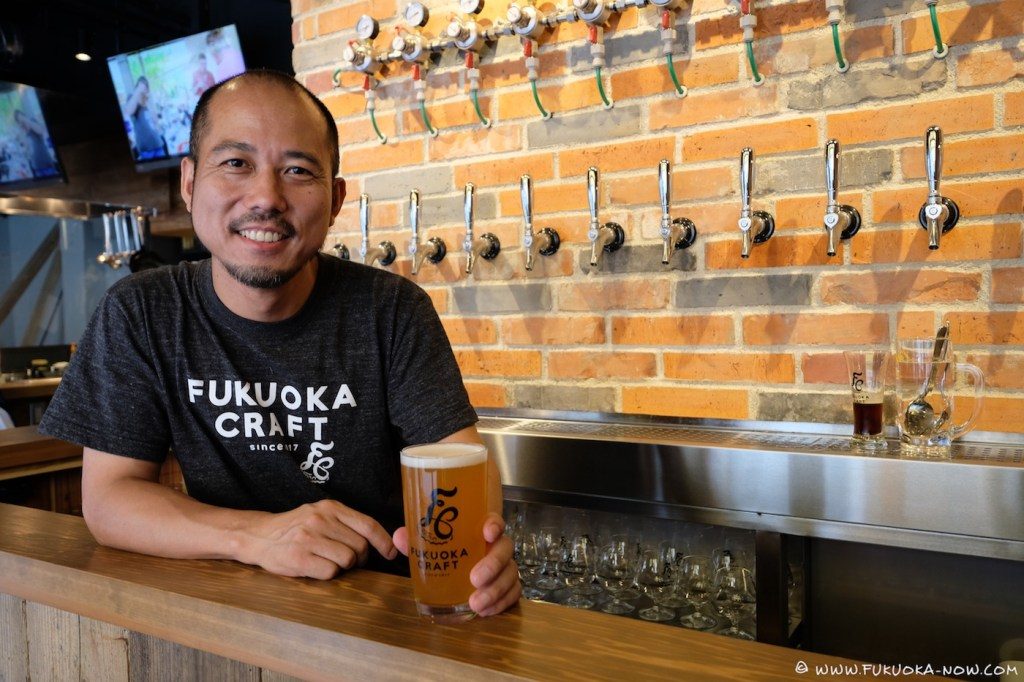
Yoshifumi Sugiyama, owner of FUKUOKA CRAFT by El Borracho
Fukuoka Craft is the latest venture of the “El Borracho” group of restaurants, which feature authentic Mexican food. The owner, Yoshifumi Sugiyama, studied cooking in Mexico, and this bar reflects his unique business approach. The bar opened in July 2017 with a menu featuring tacos, nachos, and grilled meats alongside a wide selection of craft beers, Mexican-themed cocktails, and El Borracho’s original tequila. David first knew of Fukuoka Craft as a customer. At the time he was working on a business plan for opening his own brewery. “Fukuoka had very few breweries, and I saw the opportunity right before me,” he says. A meeting was soon arranged with Sugiyama, and they hit it off at their first meeting, David recalls with a smile.
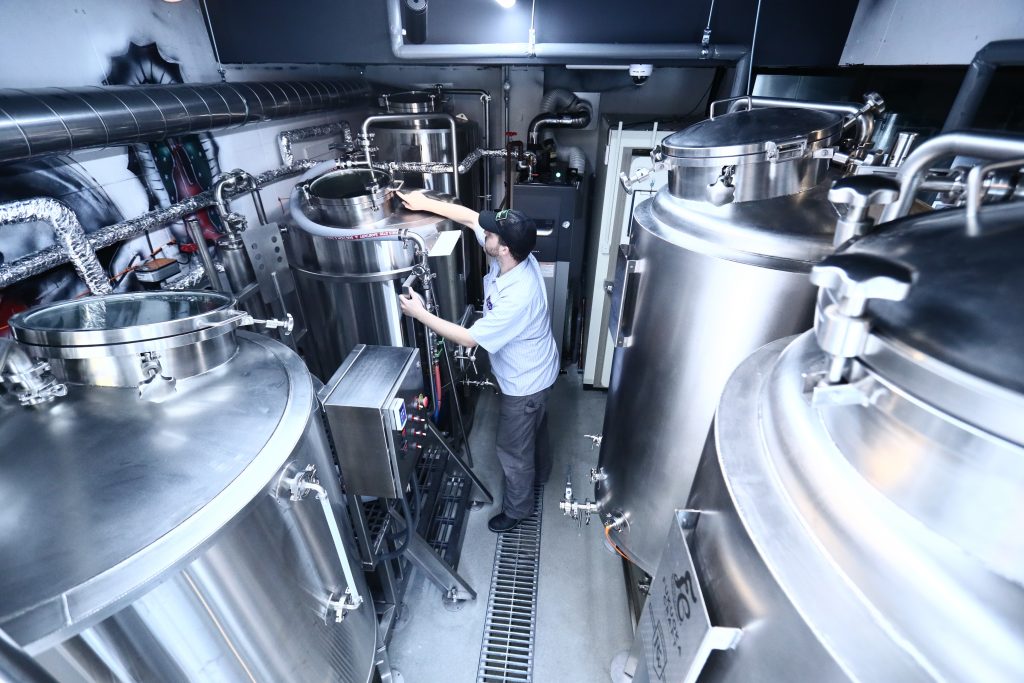
The brewery equipment was imported from Portland, Oregon, where brewer David Victor was trained in brewing
The brewery itself occupies a small space you might miss while walking past. There, David singlehandedly manages a series of brewing and fermentation tanks to make beer that he then fills into kegs. Each batch of beer yields about 450 liters. That amount will be drunk by thirsty locals in about a month.
Fukuoka Craft’s two flagship beers as brewed by David are their Pale Ale and Hazy IPA. They also brew several limited edition beers. For example, to celebrate their 1-year anniversary, David brewed a special “Black IPA”.
What really makes craft beer so special?
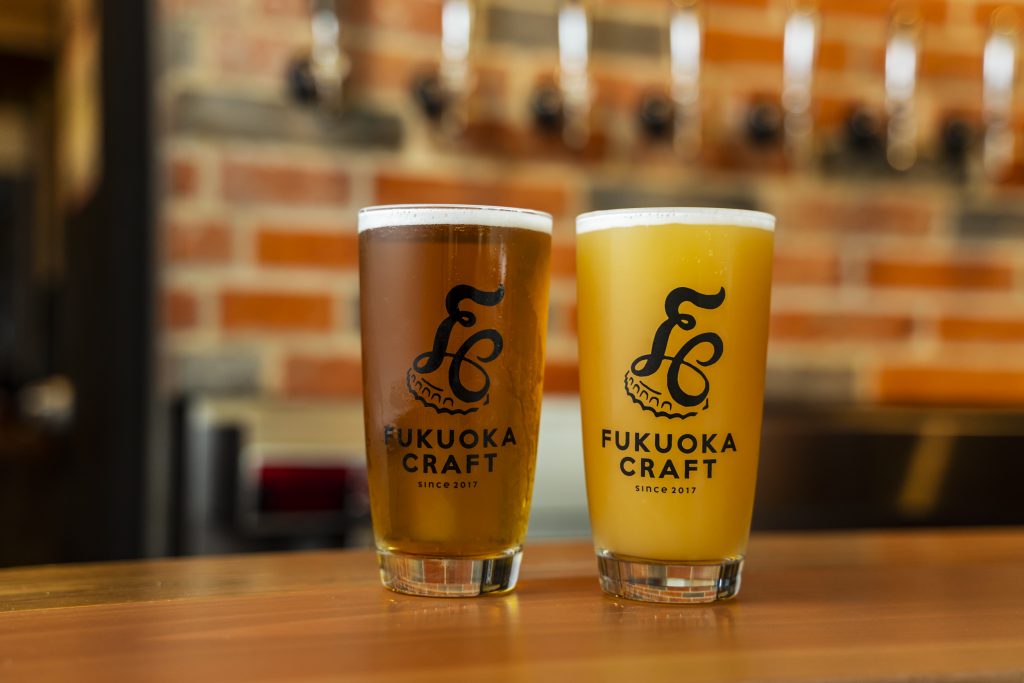
From the left: Pale Ale is packed with refreshing citrus flavors, and Hazy IPA offers a rich body with tropical aromas
What about craft beer is making it so popular?
“Beer has been around for thousands of years, as it is very durable and does not require preservatives,” explains David. “The basic ingredients are malted barley, hops (a plant that provides bitterness and aroma), yeast (required for the fermentation process), and of course water. Major beer manufacturers focus on producing beer as cheaply as possible in huge quantities, with a very mild and light flavor to appeal to the masses. American craft brewers went in another direction, using traditional recipes made in small batches at independently-owned breweries. This approach has come to define what craft beer is. To me, craft beer is something original made to a high standard without any compromises; it’s an expression of the brewer’s love of beer.”
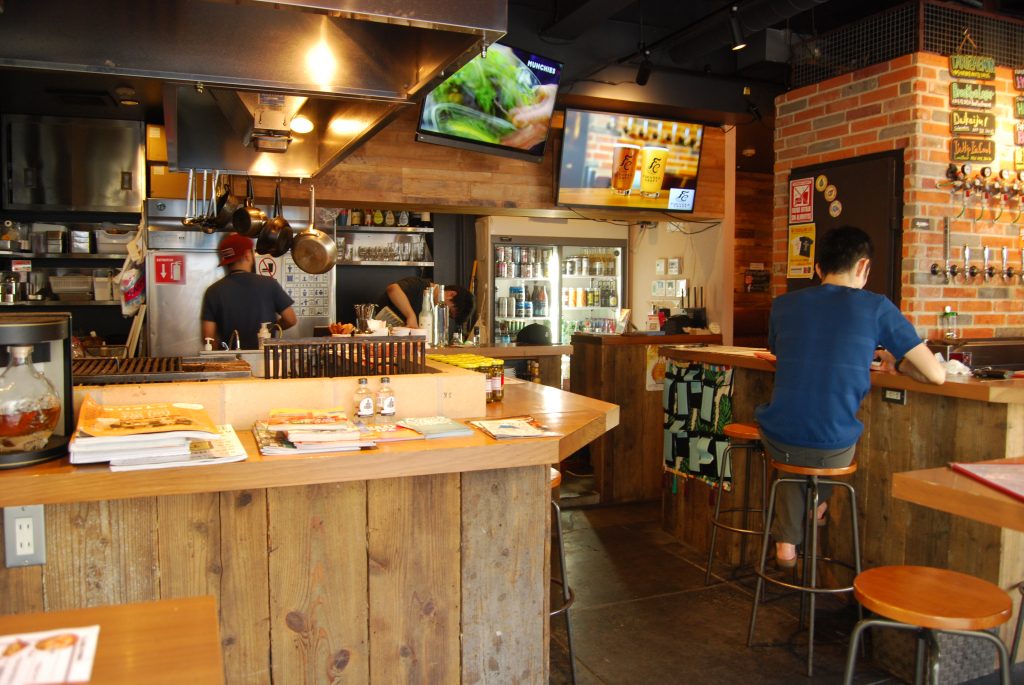
The brewery is visible from the bar through a glass wal
David uses malts from the UK and Germany, hops from the US and Australia, and filtered water drawn from Fukuoka city’s water supply. “The water is very soft, which means it is easy to brew with,” he says.
“To many, craft beer means using local ingredients and working closely with the community. In Fukuoka, Suginoya Beer is brewed using locally-grown barley, and Yame Brewery uses malt from neighboring Saga Prefecture. Even Kirin uses local Kyushu malt in its beers. We don’t have those resources, but last year we were able to brew a coffee-flavored stout. Nearby our bar in Daimyo is Manu Coffee, a coffee shop and bean roaster. In a collaborative effort, they roasted a special blend of coffee beans to add to the beer. It was so popular we have plans to make it again this winter.”
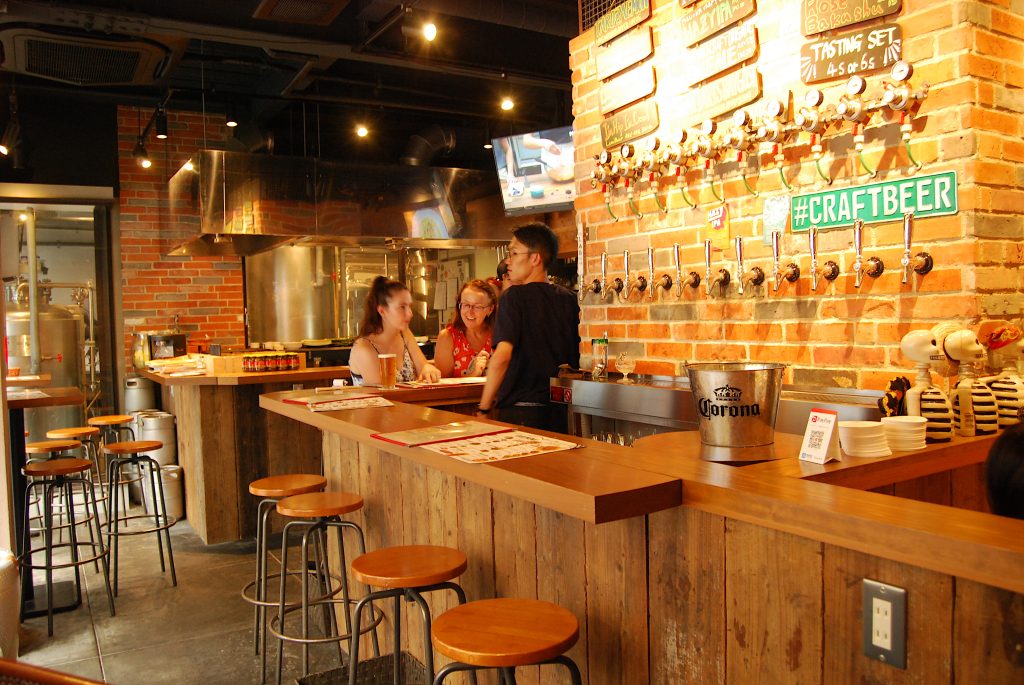
A counter for casual drinks is surrounded by tables for more relaxed dining
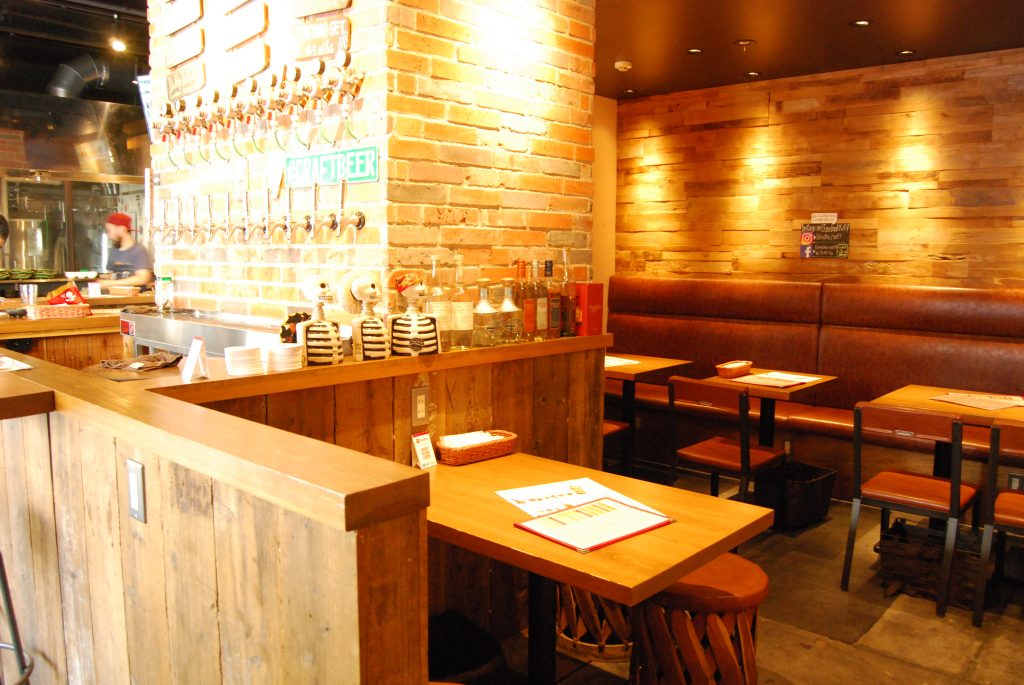
Next, we asked about the beers on tap.
“If you look at the alcohol percentage, it’s a good indicator of the strength of the flavor of the beer as well,” says David. Pale ale is an American classic style, and at around 5% it matches the average alcohol content of most standard beer. Fukuoka Craft’s interpretation of pale ale lowers the bitterness and brings out the hop aroma. This approach makes the beer unique while accessible to as wide an audience of drinkers as possible, he explains.
Hazy IPA is a trendy style that is also sometimes referred to as “New England IPA”, because of its geographical origins in the United States. By using 3 to 5 times as many hops as a standard craft beer, the beer is so saturated with hops it clouds up or becomes “hazy”. David’s recipe is recreated from brews he drank in his time studying in Portland, Oregon. Because factors such as equipment, variations in ingredients, and even the local weather and water quality play a role in determining the flavor of a beer, his brew has taken on its own unique qualities.
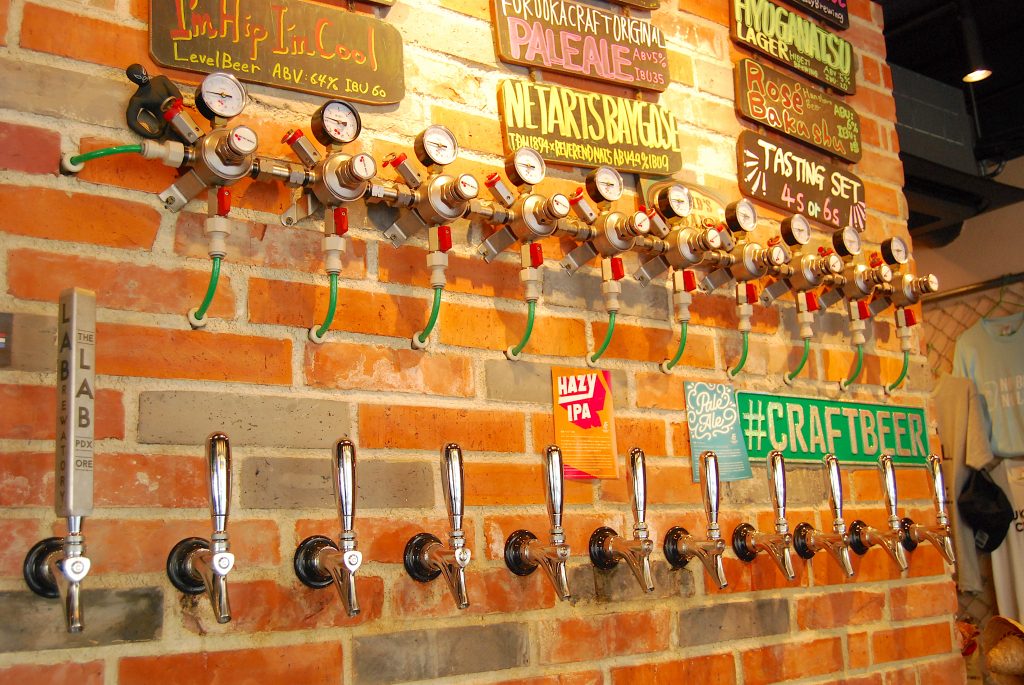
There are a total of 11 craft beer taps, with two or three being Fukuoka Craft originals
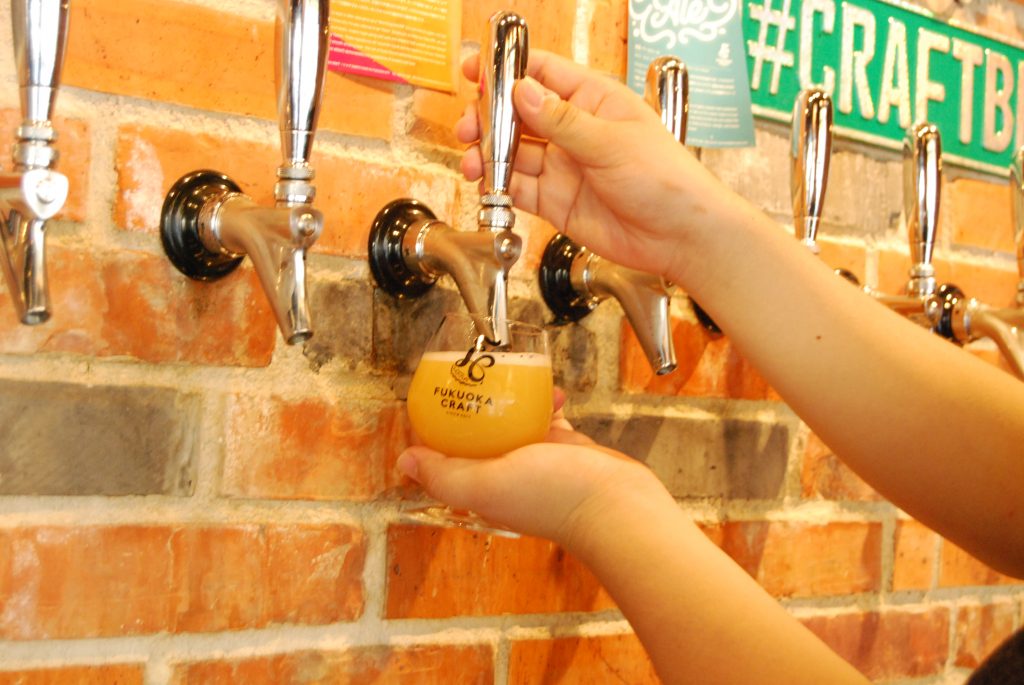
The use of specialty hops also plays a large role in determining the flavors of the beer.
“For a long time, hops were used mainly to add bitterness to a beer, but modern hops offer much more, with fruit flavors like orange or mango, and natural, earthy aromas reminiscent of flowers or pine forests. A skillful combination of these hops can bring different results to each brew, and I use a technique called ‘dry hopping’ which allows me to add distinct flavors and aromas to each beer,” continues David.
“In dry hopping, hops are added to the beer after fermentation is complete at cool temperatures. This results in almost no bitterness, but a variety of fruit flavors and aromas are drawn out from the essential oils of the hops. A typical American pale ale will use caramel-like malts to add sweetness, which is then balanced with bitterness. My pale ale uses standard malt and low bitterness as a blank canvas on which I can layer rich hop flavors and aromas.”
David uses 3 kinds of hops in his Pale Ale, and as many as 5 kinds of hops for his Hazy IPA, carefully blended together to make distinct flavors Fukuoka Craft can call its own.
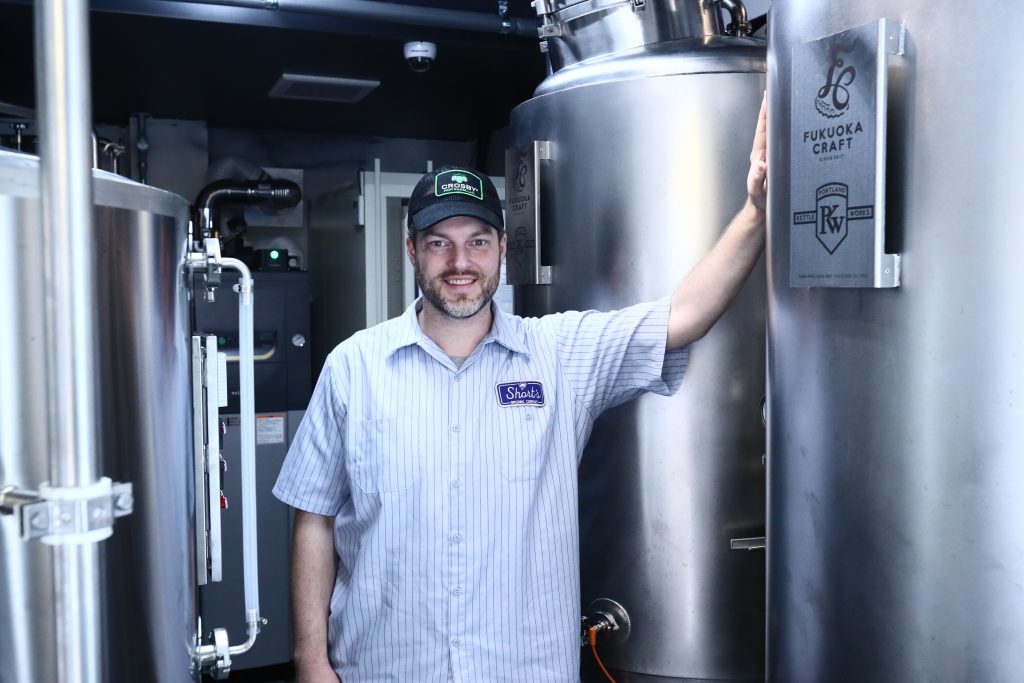
In his previous work, David spent most of his time in front of a computer. Now, he says his brewing work has a very different, “analog” feel to it.
“In my daily work, I have to grasp concepts like steam pressure, fluid mechanics, and the chemical reactions in yeast as well as the natural laws that govern them, and then proceed carefully in an experimental approach to create the flavor profiles I want. One of the best things about craft beer is each brewer’s interpretation and processes will be different, resulting in a broad range of flavors and styles of beer.”
We asked how first-time drinkers should approach craft beer and the many choices of flavors available.
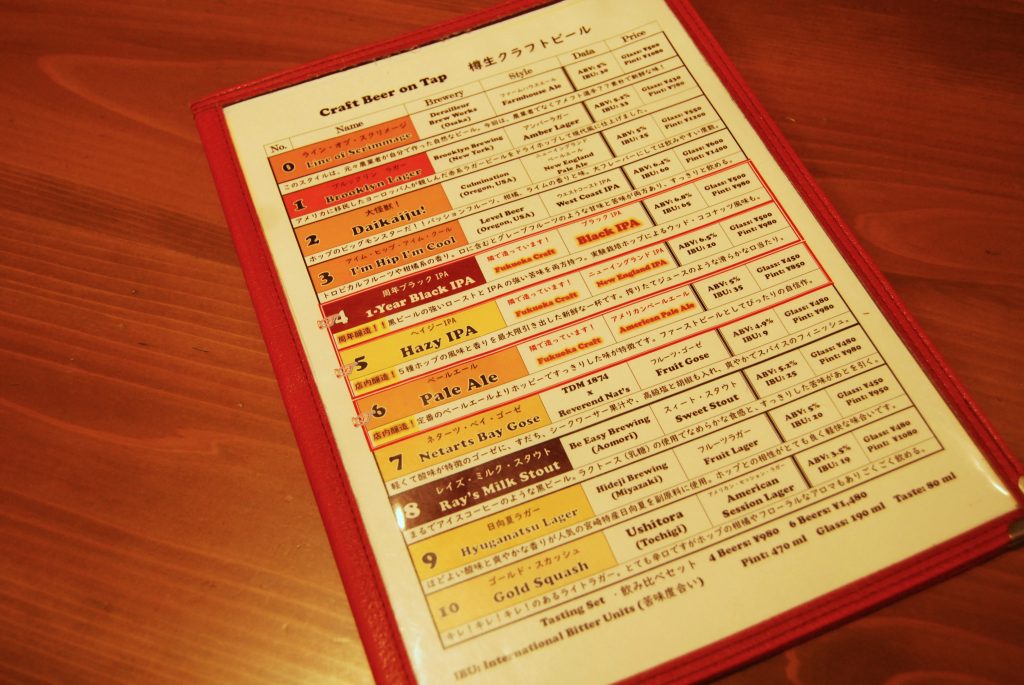
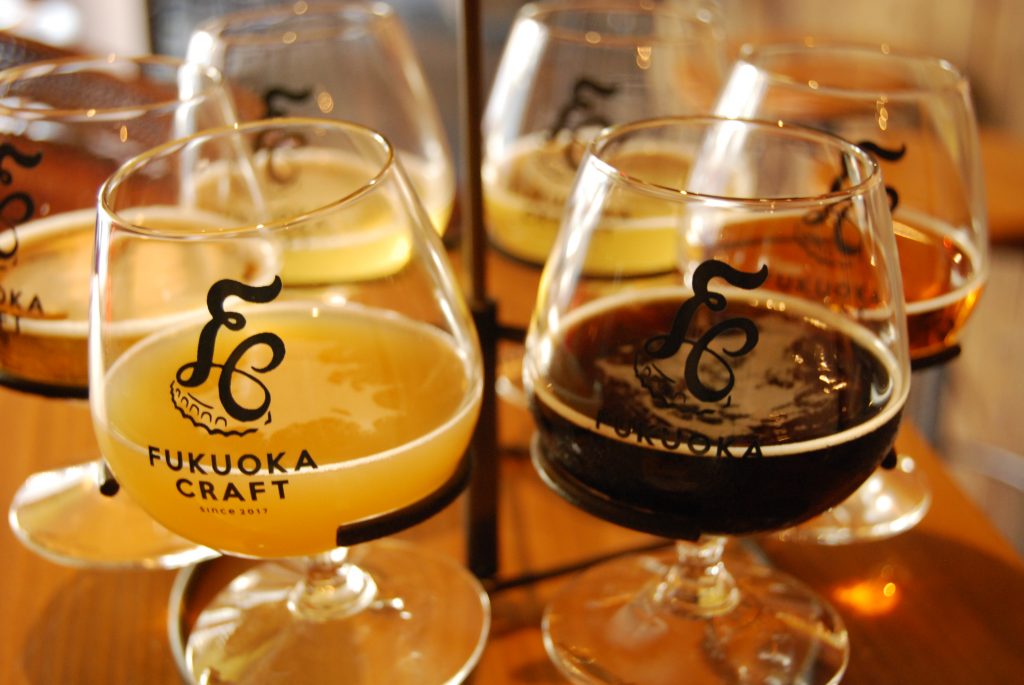
A tasting set is a great way to try out many different beers. (4 types: 980 yen, 6 types: 1,480 yen)
“We try to offer a variety of beers of different types on our tap list. Our Hazy IPA has a real strong flavor, so I would recommend trying the more delicate flavors of our Pale Ale first. My recommendation is to get a tasting set and try small amounts of several different beers to find one you like best.”
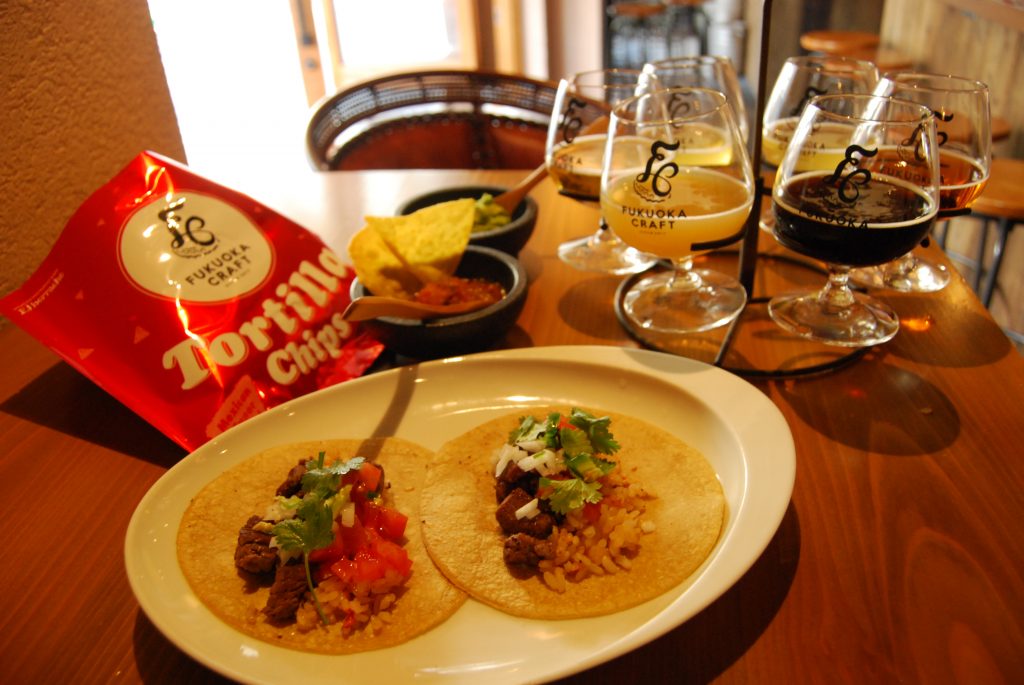
Steak tacos and chips with original salsa and guacamole are popular menu items.
Fukuoka Craft is reportedly becoming a popular destination for tourists not just from around Japan, but from around the world as well. Some comments they receive from visitors include “We didn’t know there was such a brewery in Japan!”, and “This is the best beer I’ve had in Fukuoka!”. There are also many patrons surprised to find that the beer they are drinking is made right next door.
“Traditionally, most beers in Japan are made following German styles such as lager, but now a younger generation of brewers are challenging themselves and making different.
○DATA
・FUKUOKA CRAFT
・1-11-4 Daimyo, Chuo-ku, Fukuoka City
・092-791-1494
・Open 5 p.m. – 2 a.m. (Opens 3 p.m. on weekends and holidays)
・Closed on Jan. 1